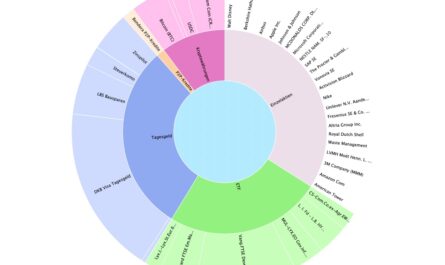The German pension system is not exactly facing a rosy future. Not only because many insured persons are threatened with old-age poverty in the low-interest environment without additional provision, but also because demographic change is jeopardizing financing. Last year alone, the federal government pumped around 100 billion euros of taxpayers’ money into the system. That is equivalent to almost a quarter of the entire budget. In order to maintain the intergenerational contract, place the system on a sustainable financing concept in the long term and thus enable all pensioners to enjoy a carefree retirement, the pension model must be fundamentally revised.
This could be done via two building blocks: First, policymakers should put fewer obstacles in the way of those who provide for their old age on their own responsibility so that they are less on the pocket of the state and society later on. Secondly, pension insurance should become bolder. In times when savers no longer receive even 0.1% interest on their call money account, higher risks have to be taken, which are, however, quite feasible if they are broadly spread and allocated to a large number of co-insured persons. People in Germany should be able to participate in the growth of the stock markets without having to deal with every detail of the issue themselves.
Sweden and Norway are the role models
Our two EU neighbors Sweden and Norway show how this can work. These countries do not rely on a purely pay-as-you-go model, but build on several pillars. For example, Swedish employees must invest 2.5% of their gross income in a pension fund in addition to the traditional pension contribution. This fund is managed by the state and is subject to strict portfolio management. The AP7 fund invests 95% of its assets in equities, with the remaining 5% allocated to bonds and cash. The fund is predominantly invested in developed markets, with only about 20% in emerging markets in the weighting. The largest sectors are financial services, technology and healthcare.
The system is similar to that of a broadly diversified ETF and has generated excellent returns in recent years. For example, the fund grew not only due to the steady deposits of Swedish contributors, but also due to increases in value on the capital markets. Depending on the year, a performance of up to 36% was possible; over the last few years, the annual increases were mostly 8%. In bad years, such as 2015 or 2018, the AP7 fund lost about 1.0 to 10%. Then contributors bought more cheaply, whereas pensioners were covered by the other two pillars and did not have to worry about their pension payments. In addition to this fund, Swedish workers benefit from a company pension financed by the employer and, of course, the usual pension insurance.
The Norwegians, on the other hand, have one of the largest sovereign wealth funds of all, which manages social security funds. It has also grown considerably in recent years and invests around two-thirds of its assets in equities, which are widely distributed among around 9,000 companies. Around 1.5% of all available shares worldwide now belong to the Norwegian pension fund. Every year, up to 3% of the capital may be transferred to the state budget, and the state even guarantees a minimum pension of 1,600 euros gross.
The Norwegian state fund was financed primarily from profits from the country’s oil and gas reserves. A hermaphrodite solution like the one in Sweden would therefore be more realistic for Germany.
The German Equity Pension of the Liberals
If you look around the German political landscape, very few politicians are in favor of funded pensions. For many, the share is just a nasty gambler’s paper. Only the liberals and parts of the CDU/CSU have recognized this. The FDP and Johannes Vogel, pension policy spokesman for the FDP parliamentary group in the Bundestag, have led the way. They have set the ball rolling for a possible stock pension. Together with his party, Vogel is calling for a concept similar to that in Sweden.
In future, 2% of the employer’s gross salary is to be paid into an equity fund organized by the state, which is also to invest in the capital market on a long-term and globally diversified basis. Employers and employees are to pay 1% each. In return, the traditional payments into the pension insurance and the conversion into pension points are to continue. It is a pity that the FDP does not pass on the obligatory savings rates directly to employers and employees, but does so at the expense of the already financially strained pension insurance. Indeed, the amounts are to be deducted from it.
In any case: Higher share ratio!
Whether such a share pension will actually come to Germany remains to be seen. The shareholder quota and thus the understanding of investing is extremely low in this country. Just 13% of Germans are invested in shares. That has to change!
Keyfacts:
- independent old-age provision must be promoted
- equity-based state fund must be created
- … like in Sweden or Norway
- the FDP has an appropriate concept on the table
- we need a higher share quota






